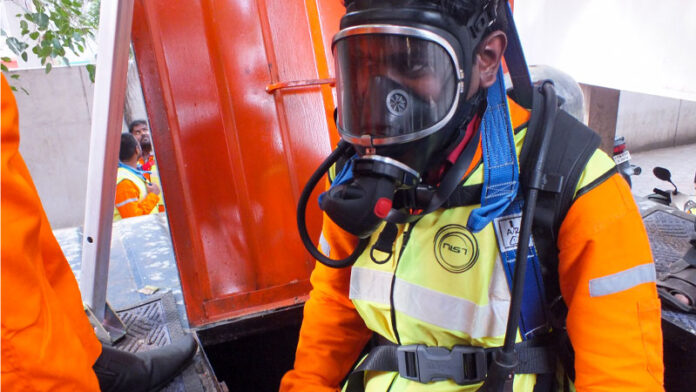Confined spaces can be anything from warehouses to crawl spaces under houses and this training will help you identify them, spot hazards within them, and come up with plans of action in case something goes wrong while you’re inside one of them. You never know when you might need your knowledge, so take advantage of this free opportunity to learn it!
It may sound like a confined space course is only good for people who work in dangerous industries, but that’s not the case. In fact, you should enroll in confined space training no matter what industry you work in. Here are the facts why you should get this training:
What Is Confined Space?
Confined space is a term that refers to any small, enclosed space. These spaces can be found in buildings, sewers, and even mines. The Occupational Safety and Health Administration (OSHA) defines confined space as a place of employment that has all of the following characteristics:
- It is large enough for an employee to enter and perform assigned work;
- it has limited or restricted means for entry or exit;
- it is not designed for continuous occupancy by employees.
The most common type of confined space is one with limited access such as a room with no windows and only one door. These are often storage areas where there are things like high shelves or other obstacles preventing people from entering without some sort of assistance.
The Risks Associated With Confined Spaces
Confined spaces are any space that has limited means of entry or exit, and lack the necessary equipment and procedures to deal with an emergency. They can pose a significant risk to workers, their families, and communities.
There are many risks associated with confined spaces that it’s important to be aware of before entering. These include:
- Lack of oxygen
- Lack of light
- Lack of ventilation
- Lack of egress
- Impacts from vibrations or noise
- The physical environment (e.g., heat, cold)
- Chemical hazards (e.g., toxic substances)
- Structural instability (e.g., structural collapse)
- Inability to escape in case of fire
- Unpredictable release of energy sources such as electricity, gas, steam, or liquid chemicals
- Potential for exposure to hazardous agents such as asbestos dust
- Possibility of being injured by collapsing material
The Benefits of Enrolling in Confined Space Training
Enrolling in confined space training can provide several benefits, including educating employees on the dangers of entering a confined space and how to recognize one. This training can also help workers understand what they should do if they or a co-worker gets stuck inside the space.
Plus, this training will equip employees with the right tools and equipment to use when entering and exiting the space. Finally, it helps workers understand why they are unable to enter a confined space without first getting proper training and what steps they need to take to ensure their safety as well as that of their co-workers.
How to Enroll in Confined Space Training
Confined space is a dangerous place and it’s important to know what you’re getting into before you step foot inside. Many different types of training can be done for confined spaces, including basic entry training and advanced hazard recognition. It’s important to understand the risks and benefits of both options so that you can choose the type of training that best suits your needs.
Conclusion
If you are an employee who is required to work or enter a confined space, it is essential that you understand the hazards and how to mitigate them. So it is essential if you will go under a confined space training not only for your safety but also for others.
Read Also : Personal Trainer Near Me: Why It Is An Intriguing Career?



































































